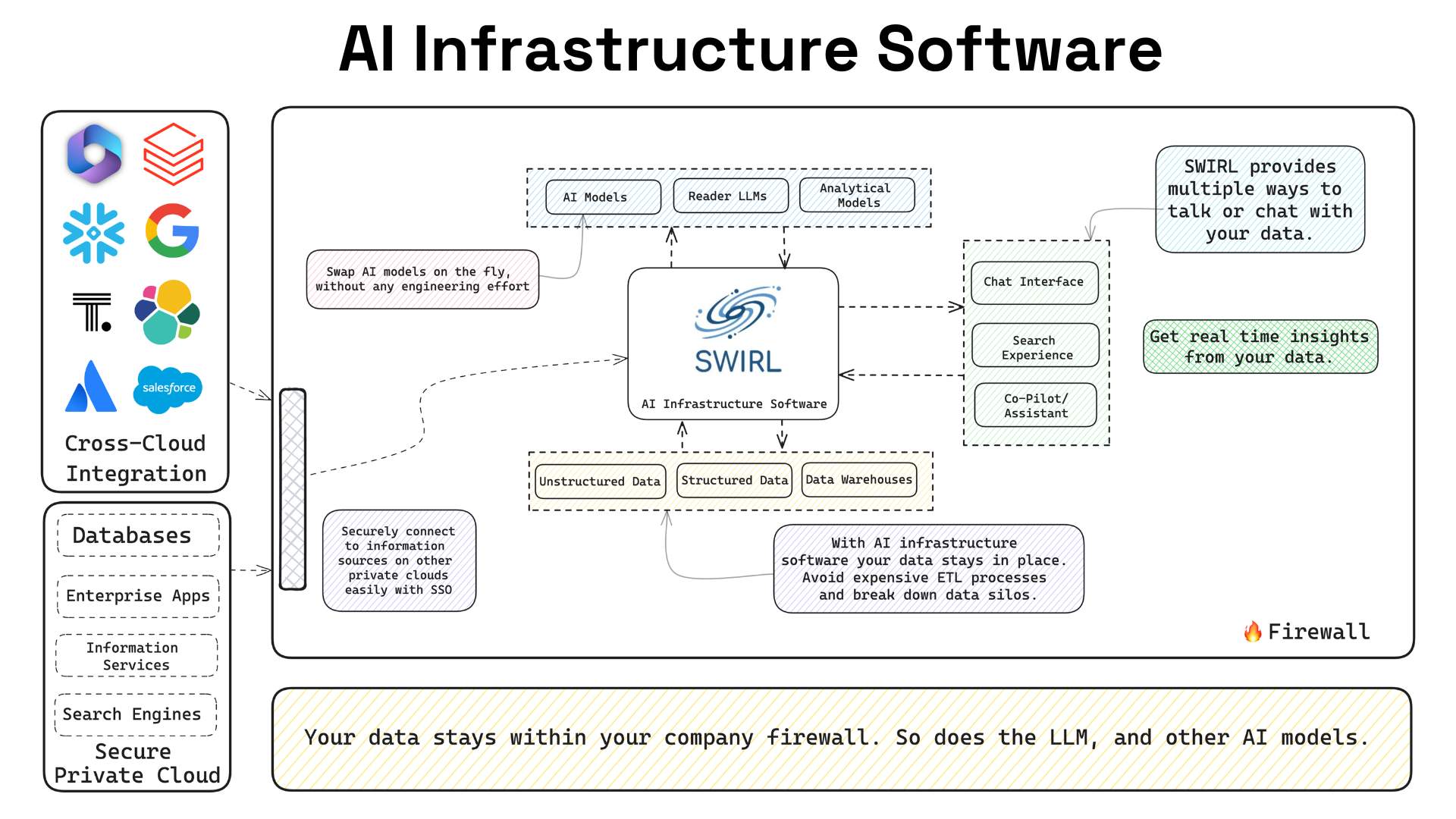Integrating Generative AI (GAI) into enterprises offers businesses a transformative opportunity to revolutionize how information is processed and utilized. Enterprises can reshape their operational landscape by leveraging advanced systems capable of generating content and insights from large datasets.
However, this transition is accompanied by significant challenges that must be addressed to maximize the benefits and ensure a smooth adoption process.
Challenges of Implementing Generative AI in Enterprises
- Bulk Copying Data into Generative AIs: Generative AI systems require substantial amounts of high-quality data to function effectively. Transferring and integrating large volumes of data from multiple sources with different structures and semantics is complex and time-consuming. Ensuring this data is accessible and usable across all systems within an organization remains a significant hurdle.
- Security Concerns: As data is aggregated from various sources, maintaining security becomes increasingly challenging. Enterprises must implement comprehensive access control measures to prevent unauthorized access and ensure data privacy. The diverse access models and constant updates required to keep security protocols current add to the complexity.
- AI Hallucinations: Generative AI systems can sometimes produce false or misleading information, known as “hallucinations.” This issue often arises due to inadequate or biased training data, leading to inaccuracies in the AI’s outputs. Addressing this requires continuous fine-tuning and monitoring of the AI models to ensure they remain reliable and accurate.
- Justifying the Investment: One of the biggest challenges for enterprises is demonstrating a clear return on investment (ROI) for GAI technologies. Without specific use cases that show tangible benefits, it cannot be easy to justify the significant costs associated with implementing and maintaining these systems. Enterprises must identify critical areas where GAI can solve specific problems and drive measurable improvements.
- Talent and Skills Gap: A significant barrier is the lack of skilled talent. Generative AI requires expertise in data engineering, AI model training, and prompt engineering, which many organizations lack.
- Scalability Issues: While building a basic generative AI model might be straightforward, scaling it for enterprise use is challenging. This involves integrating the model with existing systems, ensuring data readiness, and maintaining performance across various business functions. Developing reusable technology components and focusing on integration frameworks can help mitigate these issues.
Benefits of Generative AI in Enterprises
- Increased Productivity: Generative AI can significantly enhance productivity by providing personalized insights and automating routine data analysis tasks. For instance, AI-driven tools can help employees quickly access necessary information, reducing bottlenecks and freeing up resources for more strategic activities. According to a survey by Deloitte, organizations with high levels of AI expertise report significant improvements in efficiency and productivity.
- Comprehensive Data Analysis: GAI systems can integrate and analyze data from multiple sources, ensuring no critical information is overlooked. This comprehensive view supports more informed decision-making and helps identify trends and insights that might be missed. For example, AI-driven analytics can help healthcare and finance enterprises make better decisions by providing a holistic view of their data.
- Accelerated Decision-Making: In a fast-paced business environment, the speed at which decisions are made can be as important as the decisions themselves. Generative AI enables rapid analysis and insight generation, allowing enterprises to respond quickly to market changes and internal demands. A report by BCG highlights that companies adopting GAI can make faster and more accurate decisions, giving them a competitive edge.
- Enhanced Customer Experiences: Generative AI can personalize customer interactions by analyzing customer data to provide tailored recommendations and support. This leads to improved customer satisfaction and loyalty, driving revenue growth.
- Innovation and New Product Development: Generative AI automates creative tasks to enable rapid prototyping and testing of new products and services. This accelerates innovation cycles and allows enterprises to stay competitive in fast-moving markets.
Steps to Overcome Challenges
The solution to the challenges experienced in incorporating GAI into the enterprise lies in building AI Infrastructure Software.

- Focus on Scalable AI Infrastructure Software: Invest in a technology architecture that supports the scalability of the enterprise’s AI ecosystem. This includes the freedom to change AI models on the fly, secure data access, and search the enterprise without any data movement. It also allows for the integration of different user interfaces like search, chat, and intelligent co-pilot.
- Mitigate AI Hallucinations: Monitor and fine-tune AI models to address inaccuracies and biases. AI Infrastructure Software like SWIRL can leverage diverse and high-quality data by re-ranking to reduce the incidence of AI hallucinations and fetching data from multiple sources. You can compare how SWIRL re-ranks queries by understanding the user needs.
- Enhance Data Security and Privacy: Implement comprehensive security measures, including data encryption and access controls. AI infrastructure Software like SWIRL is designed with privacy and data security from the ground up.
The Path Forward with GAI

Generative AI is not a one-size-fits-all solution and should be implemented with specific functions in mind, such as summarizing information, answering data-driven questions, and comparing metrics. It excels in handling structured data and is particularly beneficial for data-rich enterprises needing help mining actionable insights from vast information reserves.
Currently, enterprises may be experiencing a phase of skepticism and heightened expectations, known as the “trough of disillusionment,” which is common in technology adoption cycles. However, as GAI technologies mature and their applications refine, broader acceptance and integration will likely follow. This mirrors the early adoption stages of smartphones, which eventually became indispensable in business contexts.
Conclusion
Integrating generative AI into enterprise systems presents both significant challenges and compelling benefits. While the initial adoption phase may be complex and costly, the potential for enhanced productivity, comprehensive data analysis, and accelerated decision-making make it a worthwhile investment. Early adoption may be challenging with any disruptive technology, but the long-term impacts could redefine business operations and competitive dynamics in the digital age.
By understanding and addressing the challenges, enterprises can leverage generative AI to drive innovation, efficiency, and growth, positioning themselves for success in an increasingly data-driven world.